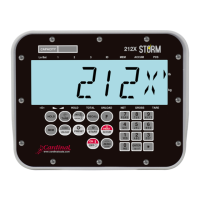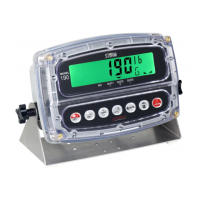What to do if my Cardinal Measuring Instruments display shows incorrect weight?
- MMargaret GrossJul 28, 2025
If the Cardinal Measuring Instruments display shows an incorrect weight, first ensure the indicator has been calibrated. Also, check that the scale platform isn't touching any surrounding objects. Verify the load cell connector wiring. If you're using four-wire load cells, make sure the sense lead jumpers (J6 & J9) are installed. Finally, confirm that you are following proper operating procedures.


